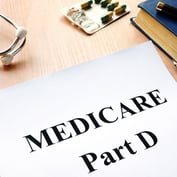Investigators at the U.S. Government Accountability Office (GAO) created 12 fake health insurance test applicants and, for now, at least, have gotten qualified health plan (QHP) coverage for 11 through the public exchanges run by the U.S. Department of Health and Human Services (HHS).
All of the fake insureds are getting the Patient Protection and Affordable Care Act (PPACA) advance premium tax credit subsidy, which is supposed to go to QHP holders with incomes from 100 percent to 400 percent of the federal poverty level. Nine are getting the cost-sharing reduction subsidy, which is supposed to go to QHP holders with incomes from 100 percent to 250 percent of the federal poverty level, according to Seto Bagdoyan, a GAO acting director.
Bagdoyan described the GAO’s investigation in a written report for Rep. Charles Boustany, R-La., chairman of the House Ways and Means oversight subcommittee, and other subcommittee members. The subcommittee is holding a hearing today on exchange application verification procedures.
The GAO investigators did not try to compare QHP identity and eligibility verification efforts with application verification efforts at other government health programs, such as Medicare or Medicaid, or with application vetting efforts at traditional private health insurers.
See also: Republicans question Sebelius exchange system certification
The GAO investigators backed up the 12 fake system testing applications with counterfeit documents created using “publicly available information” and “publicly available hardware, software and materials.” The HHS-run exchanges rejected one of the 12 fake test applicants outright, because that fake individual provided no Social Security number. The HHS exchanges have fully approved one fake applicant, but they asked for more documentation for the other 10 approved fake applicants, and they are still reviewing the documents, Bagdoyan said.








 July 23, 2014 at 07:03 AM
July 23, 2014 at 07:03 AM










